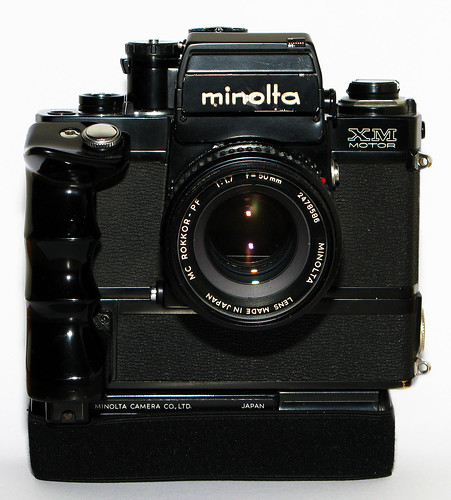Thanks all for the thoughtful replies.
Many mentioned components in the K-1 (and other digital cameras) not necessary in the LX; such is indeed the case, doubtlessly playing some role in the size difference between the two cameras. However, some of components folks listed, like the mirror system and pentaprism, were incorporated in the LX and all film SLRs, and most of the electronic elements described also reside in relatively small DSLRs like my K-3. In fact, most of these elements have found their way into my diminutive Panasonic LX100, which has all the operational (not optical) flexibility of that K-3. So these extra doo-dads in digital FF cameras probably aren't the whole story, particularly since a couple of posters noted that some digital analogs of film cameras (such as the Leica M system) are not appreciably larger than their film counterparts.
I think there's also something in the argument that the size of the K-1 is at least partially based on the product's target market. The thinking may be that serious photographers want a serious-looking camera, with enough real estate to hold all the dials, buttons and control systems these customers need and want.
After reading some of your replies last night, it occurred to me that the simplest answer to my initial question may simply be that a conventionally large DSLR body allowed the K-1 to be developed and manufactured at a cost that would meet the company's financial targets for the product. It's often cheaper to design functionality into a large gizmo than a small one, and the K-1, because of its size, perhaps can utilize more off-the-shelf parts than would have been possible in a camera the size of an LX. The extra size also may make it cheaper to manage things like heat dissipation as Bruce Clark suggested.
Anyway, who knows what the future will bring. Thanks again for your comments.
Jer
---------- Post added 01-31-2017 at 02:09 PM ----------
 Originally posted by BigMackCam
Originally posted by BigMackCam 
There's no reason for a DSLR to be much (if at all) taller or wider than something like the Sony A7 series - although the PDAF sensor beneath the main and secondary mirrors maybe adds a bit of height. In terms of depth, room is needed for the sensor and shake reduction mechanism, and for the mirror mechanism itself. It's that mirror mechanism that dictates why DSLRs must be deeper than mirrorless cameras.
For most of my hobbies that require expensive hardware (e.g. sailboats, sports cars), I'm intensely interested in the technology and construction that the hardware incorporates. However, for some reason, while I'm interested in photography, I'm totally incurious about camera technology. As a result, I don't keep up with camera developments and haven't a clue what manufacturers other than Pentax are producing. Thus, I had no idea that such a thing as the Sony A7 exists!

Maybe I'd better start paying attention.
Jer


 Similar Threads
Similar Threads 










 ). This, along with the mirror and its mechanism (and the sensor, shake reduction system, PDAF module underneath the mirrors etc. etc.) dictates the thickness of the body. As for width and height, some of this will be dictated by the electronics that have to fit inside... yet, I agree that some of it is probably by design; after all, who wants to have a tiny, feather-light camera sat on the back of a heavy 70-200 f/2.8 lens? It would feel very unbalanced indeed (I speak from experience using my A7 MkII with an A-mount Tamron 70-200 f/2.8 USD!)...
). This, along with the mirror and its mechanism (and the sensor, shake reduction system, PDAF module underneath the mirrors etc. etc.) dictates the thickness of the body. As for width and height, some of this will be dictated by the electronics that have to fit inside... yet, I agree that some of it is probably by design; after all, who wants to have a tiny, feather-light camera sat on the back of a heavy 70-200 f/2.8 lens? It would feel very unbalanced indeed (I speak from experience using my A7 MkII with an A-mount Tamron 70-200 f/2.8 USD!)...






 Post #50 by Tony Belding
Post #50 by Tony Belding








